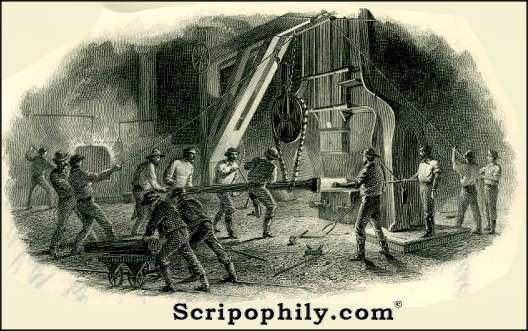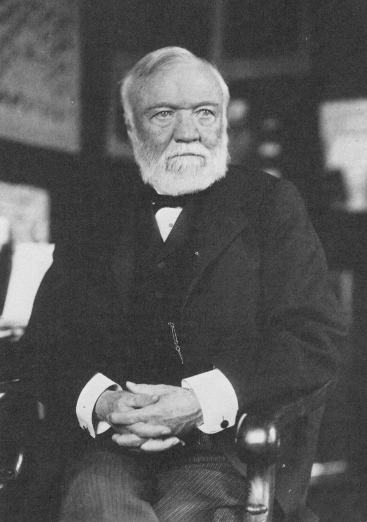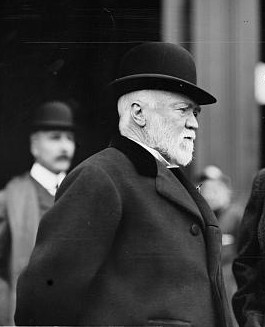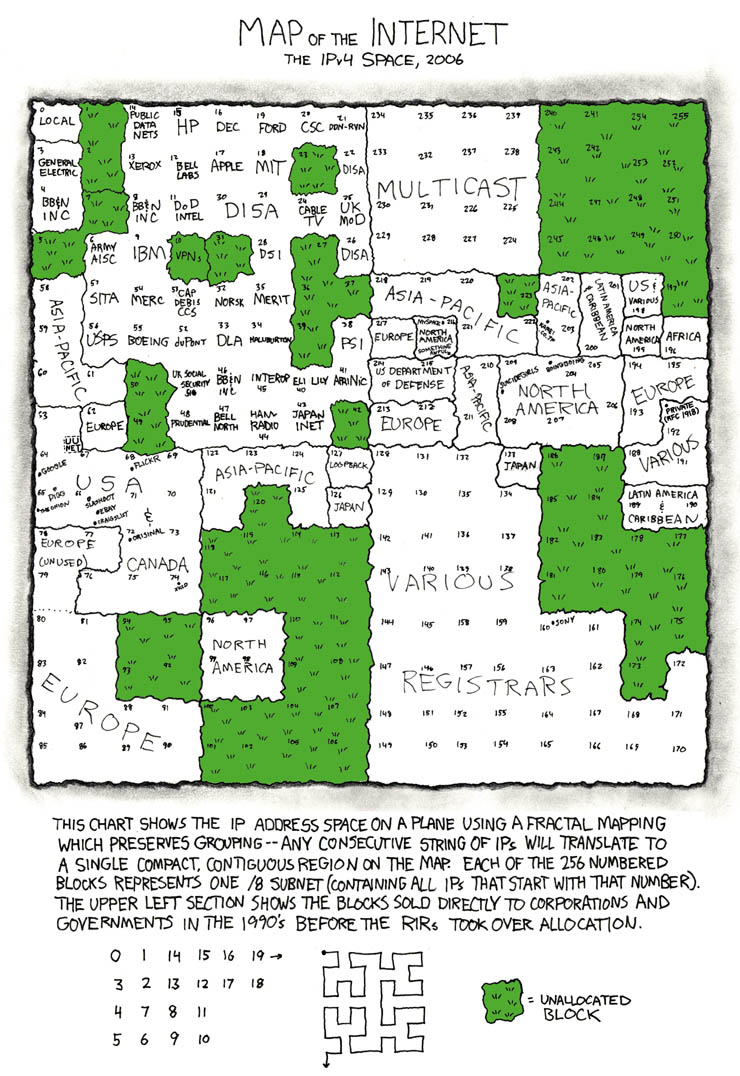|
Other articles:
|
Andrew Carnegie, the son of a handloom weaver, was born in Dunfermline, . The Carnegie Steel Company continued to expand and between 1889 and 1899 annual .

 1872 Andrew Carnegie sees Bessemer's steel plants. On a visit to England, Carnegie visits Henry Bessemer's steel plants. The Freedom Iron Company, .
Henry Clay Frick, chairman of the Carnegie Steel Company, was demonized by labor . The philanthropic Andrew Carnegie conveniently retired to his castle in .
Andrew Carnegie was an industrialist and philanthropist. Founder of the Carnegie Steel Company, which launched the steel industry in Pittsburgh, .
By this time Andrew Carnegie was recognized as the leader of this Napoleonic . In 1899 the interests were consolidated in the Carnegie Steel Company, .
Andrew Carnegie; Founder, Carnegie Steel Co., Pittsburgh; Carnegie Corp., New York.(P&I at 30: The difference-makers)(Brief Article)(Biography) (Pensions .
1872 Andrew Carnegie sees Bessemer's steel plants. On a visit to England, Carnegie visits Henry Bessemer's steel plants. The Freedom Iron Company, .
Henry Clay Frick, chairman of the Carnegie Steel Company, was demonized by labor . The philanthropic Andrew Carnegie conveniently retired to his castle in .
Andrew Carnegie was an industrialist and philanthropist. Founder of the Carnegie Steel Company, which launched the steel industry in Pittsburgh, .
By this time Andrew Carnegie was recognized as the leader of this Napoleonic . In 1899 the interests were consolidated in the Carnegie Steel Company, .
Andrew Carnegie; Founder, Carnegie Steel Co., Pittsburgh; Carnegie Corp., New York.(P&I at 30: The difference-makers)(Brief Article)(Biography) (Pensions .




 Nov 3, 2010 . Though Andrew Carnegie is not as strong as the man of steel himself, . The Carnegie Steel Company was so successful that Carnegie was .
Nov 3, 2010 . Though Andrew Carnegie is not as strong as the man of steel himself, . The Carnegie Steel Company was so successful that Carnegie was .
 Carnegie saw the opportunity and invested in iron and steel, oilfields and railways. He also offered companies financial services in selling their .
Facts about Carnegie Steel Company: founding by Carnegie, . Keystone Bridge Company. From about 1872–73, at about age 38, he began concentrating on steel, .
Finally, when he was 65, Andrew Carnegie sold his steel company to J.P. Morgan. As he was leaving, he is supposed to have said, "Now, Pierpont, .
Carnegie saw the opportunity and invested in iron and steel, oilfields and railways. He also offered companies financial services in selling their .
Facts about Carnegie Steel Company: founding by Carnegie, . Keystone Bridge Company. From about 1872–73, at about age 38, he began concentrating on steel, .
Finally, when he was 65, Andrew Carnegie sold his steel company to J.P. Morgan. As he was leaving, he is supposed to have said, "Now, Pierpont, .
 The Carnegie Steel Company continued to prosper even during the depression of 1892, . Andrew Carnegie and the Rise of Big Business (1975, reissued 1988). .
Carnegie Steel Company was a steel producing company created by Andrew Carnegie to manage business at his steel mills in the Pittsburgh, Pennsylvania area .
On March 12, 1901, Andrew Carnegie, one of the world's foremost industrialists, . Search results will include photographs of a 1908 Carnegie Steel Company .
The Carnegie Steel Company continued to prosper even during the depression of 1892, . Andrew Carnegie and the Rise of Big Business (1975, reissued 1988). .
Carnegie Steel Company was a steel producing company created by Andrew Carnegie to manage business at his steel mills in the Pittsburgh, Pennsylvania area .
On March 12, 1901, Andrew Carnegie, one of the world's foremost industrialists, . Search results will include photographs of a 1908 Carnegie Steel Company .
 The Inside History of the Carnegie Steel Company. Reprinted by University of Pittsburgh Press. . Andrew Carnegie did not go to school until the age of 8. .
The Inside History of the Carnegie Steel Company. Reprinted by University of Pittsburgh Press. . Andrew Carnegie did not go to school until the age of 8. .



 A short biography of the entrepreneur of steel - Andrew Carnegie. . In 1899 he consolidated his different enterprise into the Carnegie Steel Company. .
American industrialist Andrew Carnegie (1835-1919) is one of the richest people in history, . . In time, the Carnegie Steel Company became so well run and .
A short biography of the entrepreneur of steel - Andrew Carnegie. . In 1899 he consolidated his different enterprise into the Carnegie Steel Company. .
American industrialist Andrew Carnegie (1835-1919) is one of the richest people in history, . . In time, the Carnegie Steel Company became so well run and .

 May 1, 2007 . CAPS: Carnegie, Andrew Carnegie, J P Morgan, Henry Bessemer, Henry Clay Frick, J . Edgar Thomson Steel Works, Carnegie Steel Company, .
Andrew Carnegie saw this demand and seized the moment. . All these tactics made the Carnegie Steel Company a multi-million dollar corporation. .
(8) His company, Carnegie Steel, was the biggest steel company at the time. . (9)John S. Bowman, Andrew Carnegie: Steel Tycon (Englewood Cliffs, .
. the Carnegie Steel Company, which launched the steel industry in Pittsburgh. . Each of the organizations established by Andrew Carnegie has its own .
May 1, 2007 . CAPS: Carnegie, Andrew Carnegie, J P Morgan, Henry Bessemer, Henry Clay Frick, J . Edgar Thomson Steel Works, Carnegie Steel Company, .
Andrew Carnegie saw this demand and seized the moment. . All these tactics made the Carnegie Steel Company a multi-million dollar corporation. .
(8) His company, Carnegie Steel, was the biggest steel company at the time. . (9)John S. Bowman, Andrew Carnegie: Steel Tycon (Englewood Cliffs, .
. the Carnegie Steel Company, which launched the steel industry in Pittsburgh. . Each of the organizations established by Andrew Carnegie has its own .

 In 1873 he organized a steel rail company. The first steel furnace at . The Autobiography of Andrew Carnegie. Boston: Houghton Mifflin Company, 1920. .
In 1873 he organized a steel rail company. The first steel furnace at . The Autobiography of Andrew Carnegie. Boston: Houghton Mifflin Company, 1920. .
 Homestead 's management, with millionaire Andrew Carnegie as owner, . Carnegie Steel Co. was making massive profits—a record $4.5 million just before the .
Homestead 's management, with millionaire Andrew Carnegie as owner, . Carnegie Steel Co. was making massive profits—a record $4.5 million just before the .
 Andrew Carnegie came to America as a boy, became the world's richest man . to acquire the components of what would become the Carnegie Steel Company. .
Andrew Carnegie came to America as a boy, became the world's richest man . to acquire the components of what would become the Carnegie Steel Company. .
 Andrew Carnegie: And the Steel Industry (Ameri. by Lewis K. Parker . and finally formed Carnegie Steel, the largest steel company in the world. .
Andrew Carnegie: And the Steel Industry (Ameri. by Lewis K. Parker . and finally formed Carnegie Steel, the largest steel company in the world. .
 The Steel Business Andrew Carnegie made his fortune in steel, turning the industrial world on its ear in the process. He was possessed by technology and .
Jump to Building the steel industry: The Carnegie Steel Company by 1900 had become an immense organization with a profit of $40 million that year. .
Andrew Carnegie built and grew the Carnegie Steel Corporation, at that time the largest steel manufacturing company in the world. The success of the steel .
An historical overview of Andrew Carnegie as one of the most successful businessmen . Carnegie did not want to remain a shareholder in the steel company, .
The Steel Business Andrew Carnegie made his fortune in steel, turning the industrial world on its ear in the process. He was possessed by technology and .
Jump to Building the steel industry: The Carnegie Steel Company by 1900 had become an immense organization with a profit of $40 million that year. .
Andrew Carnegie built and grew the Carnegie Steel Corporation, at that time the largest steel manufacturing company in the world. The success of the steel .
An historical overview of Andrew Carnegie as one of the most successful businessmen . Carnegie did not want to remain a shareholder in the steel company, .
 Carnegie Steel Company was a steel producing company created by Andrew Carnegie to manage business at his steel mills in the Pittsburgh, Pennsylvania area .
Jump to 1885–1900: Empire of Steel: Carnegie combined his assets and those of his associates in 1892 with the .
United States Steel Corporation's Founding Fathers. Andrew Carnegie, J.P. Morgan . a group headed by Gary and Morgan bought Carnegie's steel company and .
Company guards were hired through the Pinkerton's National Detective Agency. . Question: How did Andrew Carnegie make his money? Answer: In the Steel .
Carnegie Steel Company was a steel producing company created by Andrew Carnegie to manage business at his steel mills in the Pittsburgh, Pennsylvania area .
Jump to 1885–1900: Empire of Steel: Carnegie combined his assets and those of his associates in 1892 with the .
United States Steel Corporation's Founding Fathers. Andrew Carnegie, J.P. Morgan . a group headed by Gary and Morgan bought Carnegie's steel company and .
Company guards were hired through the Pinkerton's National Detective Agency. . Question: How did Andrew Carnegie make his money? Answer: In the Steel .

 Andrew Carnegie ultimately made his fortune in steel, turning the . joined several of his business interests by forming the Carnegie Steel Company, .
Andrew Carnegie ultimately made his fortune in steel, turning the . joined several of his business interests by forming the Carnegie Steel Company, .
 Andrew Carnegie. Identification: Industrialist who launched the steel industry in Pittsburgh with Carnegie Steel Company and who later was devoted to .
Andrew Carnegie. Identification: Industrialist who launched the steel industry in Pittsburgh with Carnegie Steel Company and who later was devoted to .

 Jump to 1885–1900: Building an empire of steel: By 1889, the U.S. output of steel exceeded that of the UK, and Andrew Carnegie owned a large part of it .
Andrew Carnegie was a Scottish industrialist. He was the founder of Pittsburgh's Carnegie Steel Company which later became U.S. Steel. Carnegie is known for .
Jump to 1885–1900: Building an empire of steel: By 1889, the U.S. output of steel exceeded that of the UK, and Andrew Carnegie owned a large part of it .
Andrew Carnegie was a Scottish industrialist. He was the founder of Pittsburgh's Carnegie Steel Company which later became U.S. Steel. Carnegie is known for .
 Mar 25, 2008 . Business Associate of Andrew Carnegie; later Chairman of the Carnegie Steel Company, Limited(during the 1890s) .
Mar 25, 2008 . Business Associate of Andrew Carnegie; later Chairman of the Carnegie Steel Company, Limited(during the 1890s) .
 Andrew Carnegie was the father of modern steel and was one of America's richest men. He started the Carnegie Steel Company, which later merged with Steel .
Andrew Carnegie was the father of modern steel and was one of America's richest men. He started the Carnegie Steel Company, which later merged with Steel .
 Mar 25, 2011 . How did Andrew Carnegie make his fortune? . He built Pittsburgh's Carnegie Steel Company, which was later merged with Elbert H. Gary's .
Mar 25, 2011 . How did Andrew Carnegie make his fortune? . He built Pittsburgh's Carnegie Steel Company, which was later merged with Elbert H. Gary's .
 The Carnegie Company successfully swept unions out of Homestead and reduced it to a negligible factor in the steel mills throughout the Pittsburgh area. .
Andrew Carnegie question: What was Andrew Carnegie's steel company called? it was called US Steel.
The Carnegie Company successfully swept unions out of Homestead and reduced it to a negligible factor in the steel mills throughout the Pittsburgh area. .
Andrew Carnegie question: What was Andrew Carnegie's steel company called? it was called US Steel.




 Andrew Carnegie (1835-1919) was a Gilded Age industrialist, the owner of the Carnegie Steel Company, and a major philanthropist. He epitomized the Gilded .
Andrew Carnegie (1835-1919) was a Gilded Age industrialist, the owner of the Carnegie Steel Company, and a major philanthropist. He epitomized the Gilded .
 Andrew Carnegie was born on 25 November 1835 in Dunfermline, Scotland. . The Carnegie Steel Company continued to prosper even during the depression of .
Andrew Carnegie was born on 25 November 1835 in Dunfermline, Scotland. . The Carnegie Steel Company continued to prosper even during the depression of .
 Feb 4, 2010 . By the end of the 1890s, Carnegie Steel Company was the world's . Autobiography of Andrew Carnegie. Boston: Houghton Mifflin, 1920. .
Feb 4, 2010 . By the end of the 1890s, Carnegie Steel Company was the world's . Autobiography of Andrew Carnegie. Boston: Houghton Mifflin, 1920. .

 As this expiration date neared, steel baron Andrew Carnegie, . The company hired back some of them as non-union workers and blacklisted others. Carnegie .
As this expiration date neared, steel baron Andrew Carnegie, . The company hired back some of them as non-union workers and blacklisted others. Carnegie .

 Abstract: Andrew Carnegie was born on November 25, 1835, in Dunfermline, . . For a price of $480000000 Carnegie sold the Carnegie Steel Company to fellow .
Abstract: Andrew Carnegie was born on November 25, 1835, in Dunfermline, . . For a price of $480000000 Carnegie sold the Carnegie Steel Company to fellow .

 Reading 1: Andrew Carnegie. Andrew Carnegie's decision to support library . on steel manufacturing, ultimately creating the Carnegie Steel Company. .
Reading 1: Andrew Carnegie. Andrew Carnegie's decision to support library . on steel manufacturing, ultimately creating the Carnegie Steel Company. .
 Mar 17, 2010 . Short Bio of Andrew Carnegie: Andrew Carnegie was a simple man, who started from nothing and built a business empire; Carnegie Steel Company .
His steel company prospered, and when Carnegie sold the company to J.P. . By the time of his death in 1919, Andrew Carnegie had given away about $350 .
Sep 28, 2007 . Andrew Carnegie, U.S. Steel, and Pittsburgh were what Bill Gates, . And with his current stake in the world's #1 steel company worth over .
Sitemap
Mar 17, 2010 . Short Bio of Andrew Carnegie: Andrew Carnegie was a simple man, who started from nothing and built a business empire; Carnegie Steel Company .
His steel company prospered, and when Carnegie sold the company to J.P. . By the time of his death in 1919, Andrew Carnegie had given away about $350 .
Sep 28, 2007 . Andrew Carnegie, U.S. Steel, and Pittsburgh were what Bill Gates, . And with his current stake in the world's #1 steel company worth over .
Sitemap
|



























































































